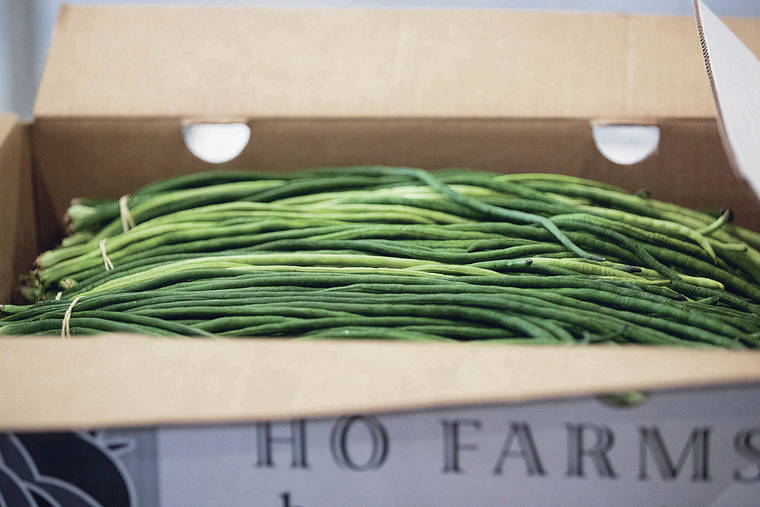Column: Pause before returning to ‘normal’ in Hawaii

CINDY ELLEN RUSSELL / CRUSSELL@STARADVERTISER.COM
More local food production could be a “new normal” goal. Locally grown greens was delivered to the Hawaii Foodbank on April 14.
Everyone wants to get back to work, to school, to “normal.” But before we hit reset, what do we want the new “normal” to be?
Does “normal” mean a fast-tracked return of 10 million-plus visitors who burden our overtaxed infrastructure and crowd our under-resourced parks, trails, beaches and natural areas? Our corals, water quality, seals, turtles, birds, fish and more have visibly thrived during this forced respite. Can we balance an economic reboot and find a sustainable balance for our resources and residents?
Is a return to “normal” going back to public hearings where people vent their pent-up anger at perceived pre-ordained outcomes and unceasing pressure on what makes Hawaii our home? Where personal attacks are the norm, rather than a spirit of community building and aloha? Is “normal” a return to feeling helpless about the future of Hawai‘i?
This crisis painfully highlights how the “more tourism the better” basket sets us up for economic disaster. Rather than pump money back into tourism, why not invest in our people and in Hawaii Nei?
Communities across Hawaii are brainstorming immediate and long-term ideas to create a “new normal” such as:
>> Green jobs. A post COVID-19 Opens in a new tab Conservation Corps that grow and distribute food, screen invasive species at ports, manage natural and cultural resources with communities, oversee responsible visitor access, manage access to neighborhoods, and monitor the health of resources and user experiences as areas “reopen” so when social distancing requirements relax, we have data to inform responsible limits.
Don't miss out on what's happening!
Stay in touch with breaking news, as it happens, conveniently in your email inbox. It's FREE!
>> Tourism/green fees. Focus tourism dollars to attract high-value visitors who spend more, stay longer, want to learn about our resources and culture and give back to their care. Visitors who could purchase a $100 “green passport” to natural areas that supports management, maintenance and facilities. Pass the Environmental Kuleana Bill to provide funds to analyze green fee regimes.
>> Living wage. Invest in living wage jobs in agriculture, sustaining resources, and community building. Increase the state Department of Land and Natural Resources budget to transform institutional frameworks, capacities and positions to work with communities and educate/monitor visitors. Increase community center staff to coordinate food systems, malama ‘aina efforts, and the reconnection to ‘aina for physical and mental health.
>> Land. Empower communities to secure and steward their ‘aina through the state and county open space programs, allowing communities to grow food, enhance access to coastlines and trails, and reconnect people to culture.
>> Local food. Increase local food production. Streamline permitting, subsidize consumption and distribution, scale state/county purchases of local food, and invest in commercial kitchens, food processing centers, and community and school gardens.
>> Education. Support schools to malama ‘aina and grow food. Invest in the digital infrastructure (100% rural internet/Wifi) to educate all students and engage rural communities in decision-makings. Develop certificate/degree programs and more community/‘aina-integrated partnerships in the University of Hawaii system.
>> Community. Pass the proposed carbon tax and ensure earnings support community-based stewardship and resilience efforts. Invest in community building and resilience processes by approving community-based subsistence fishery area rules packages and use virtual public hearings to expedite the approval process.
Do we really want to push reset and return to “normal”? Or can we pause to envision, invest in, and build a more sustainable future for Hawaii that honors its past and nurtures our future for the benefit of all?
The Hawaii Green Growth Initiative is collecting ideas and initiatives at www.surveymonkey.com/r/KKF5VZC Opens in a new tab. This survey will close on May 6; please contribute your ideas for our post-COVID 19 “normal.”
Kevin Chang and Miwa Tamanaha are co-directors of KUA (Kua‘aina Ulu ‘Auamo); Lea Hong is Hawaii state director of The Trust for Public Land.




